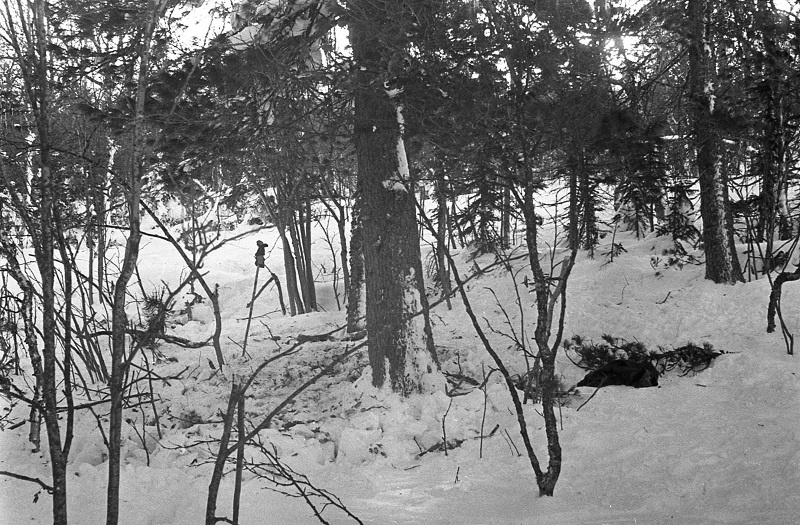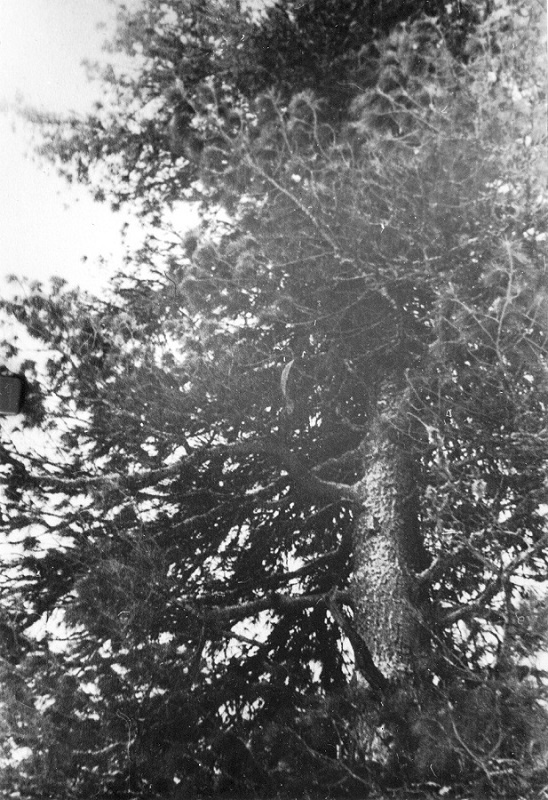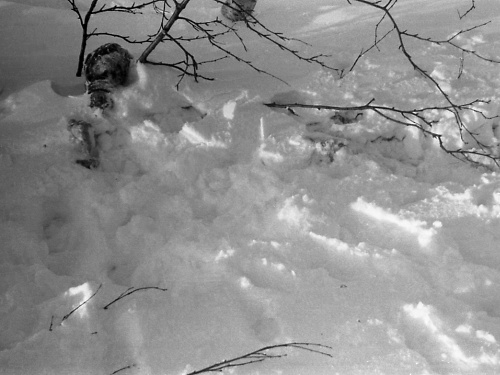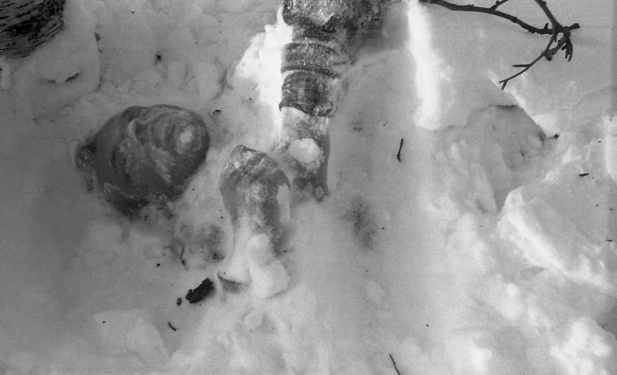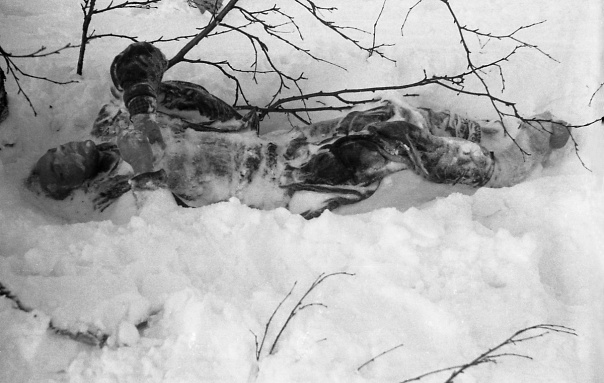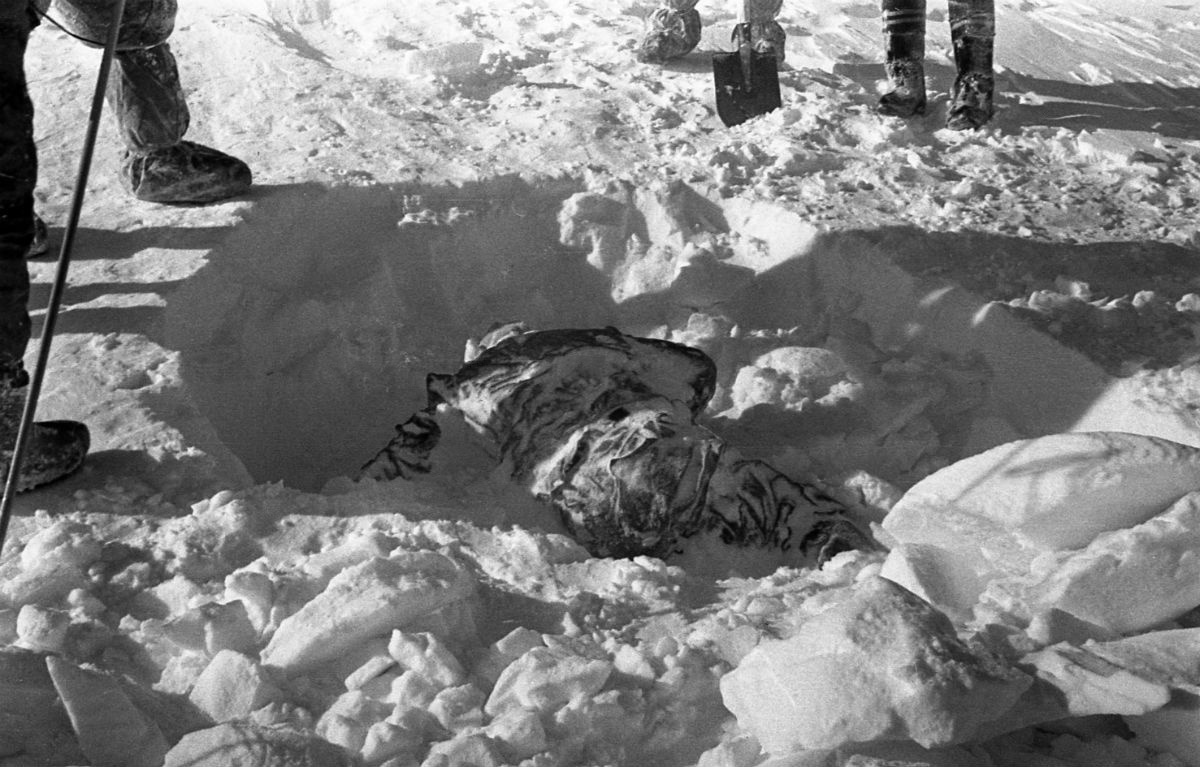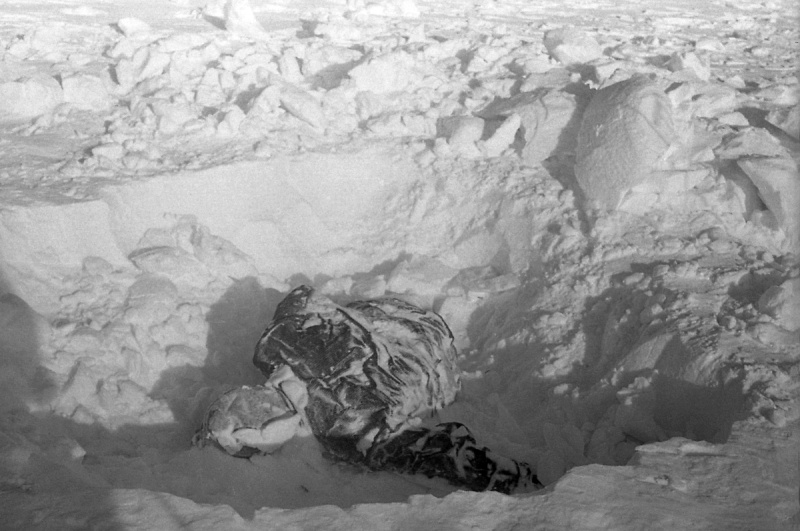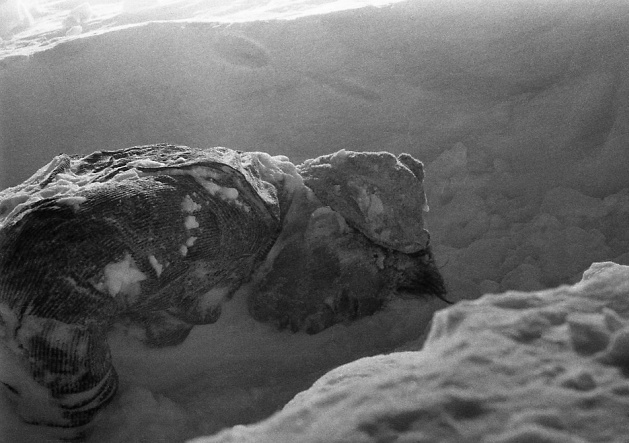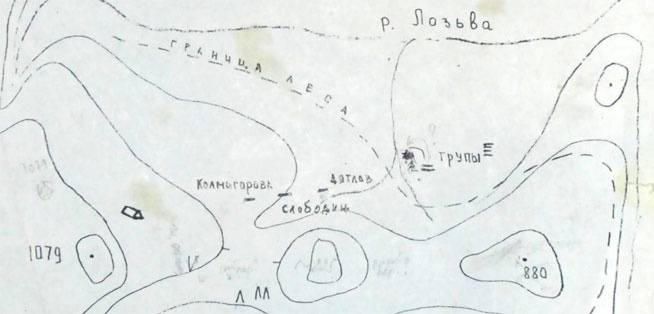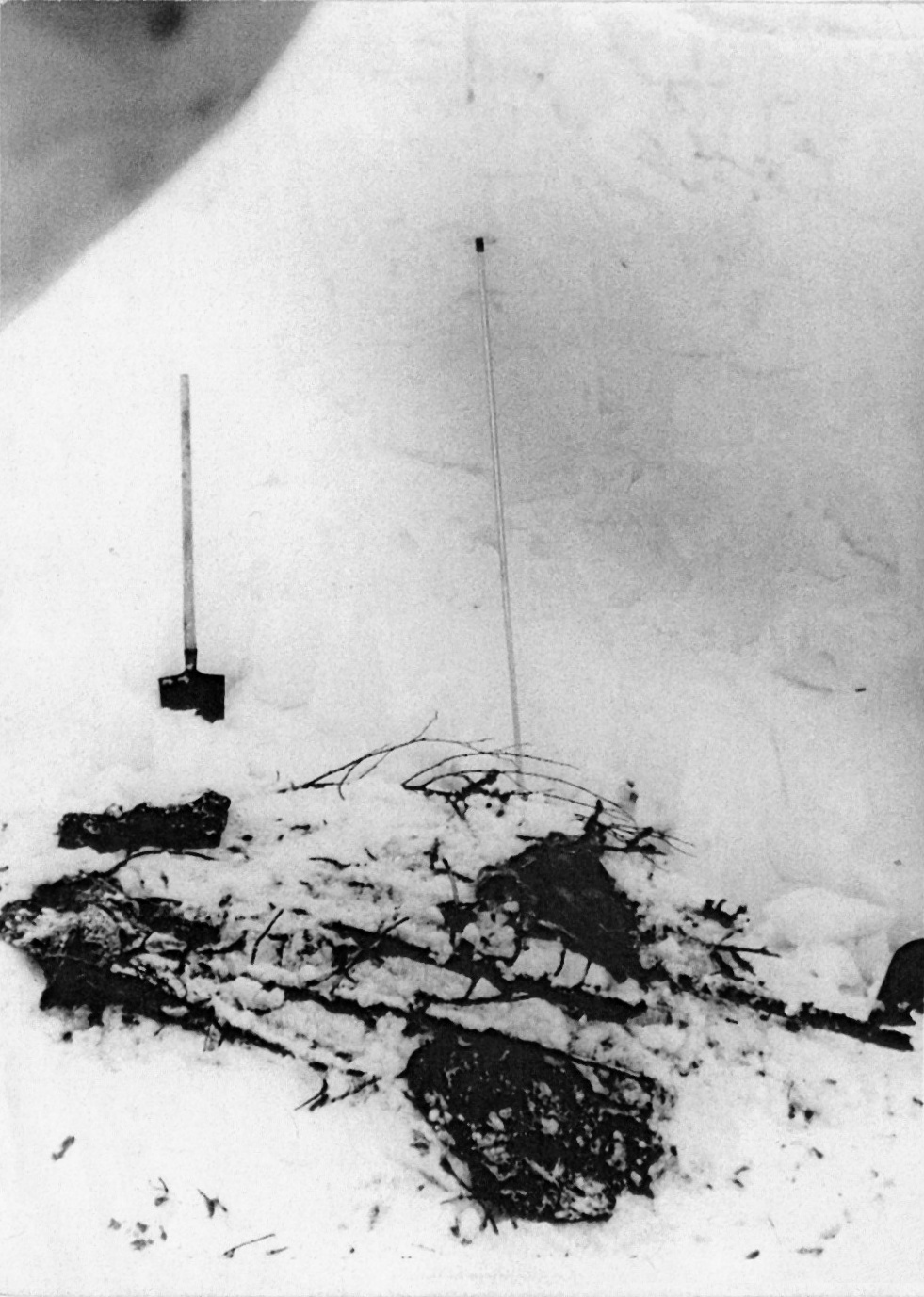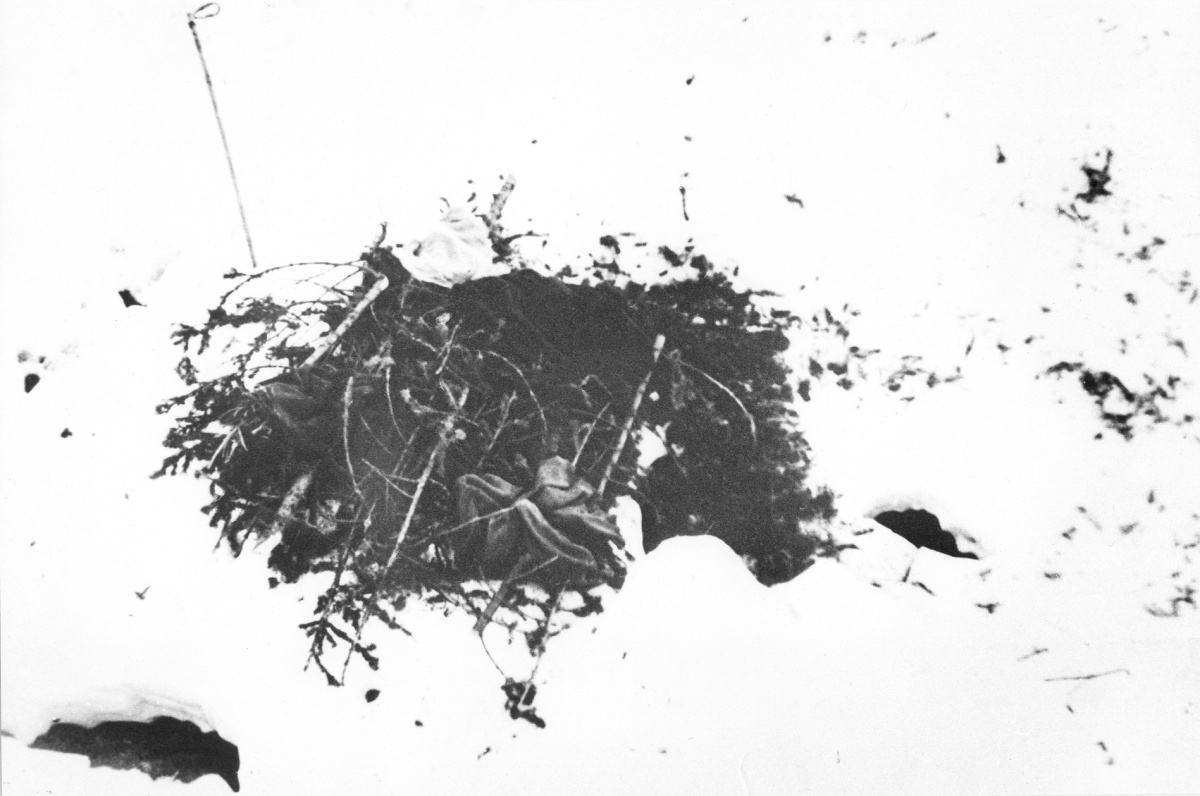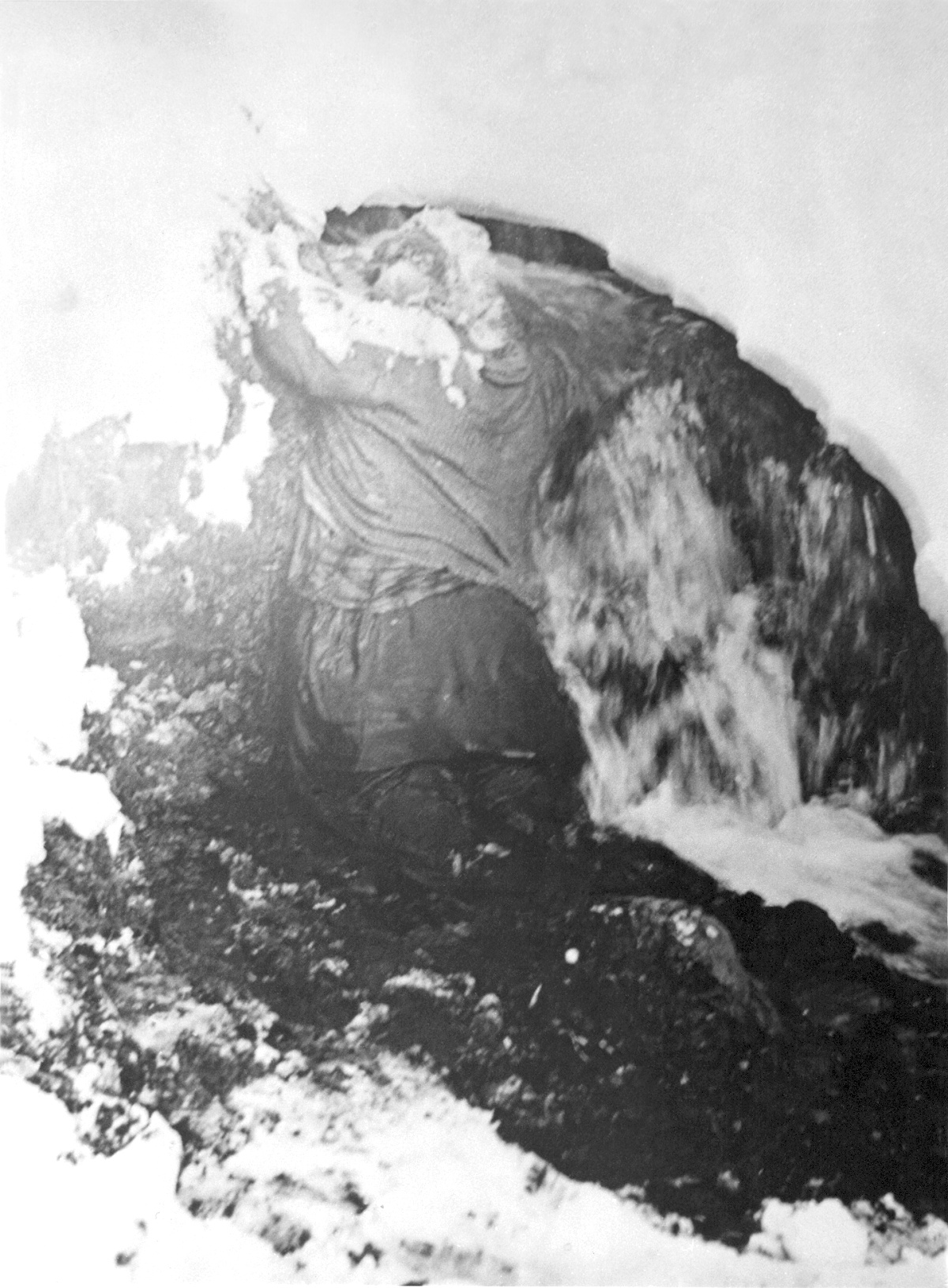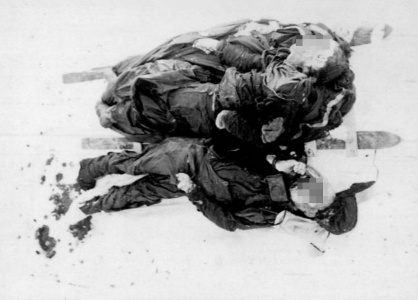
Death
Bodies of Yuri Doroshenko, Yuri Krivonischenko, Igor Dyatlov and Zinaida Kolmogorova were found on February 27, 1959 and brought to Ivdel. Autopsy was performed on March 4 by the regional bureau forensic patologyst Boris Alekseevich Vozrozhdenniy (ironically his last name means "reborn" in Russian, interesting choice of profession) and the city medical examiner of Severouralsk Ivan Ivanovich Laptev. Medical examiners were still seeing the accident as freezing to death, although certain details were rising questions: Doroshenko had pulmonary oedema and pulmonary contusion as a result of blunt trauma; Krivonischenko bit off a piece his own knuckle to stay awake or stifle a cry and had 3rd degree burns that can not be sustained if you fall asleep still alive; Dyatlov was vomiting blood and Kolmogorova had a baton shaped bruise on her waist. Still the cause of death was hypothermia and nobody was suspecting a foul play. Not yet. On March 5 was found the fifth body and it was identified as Rustem Slobdoin. His autopsy was performed on March 8 by Vozrozhdenniy alone. The skull trauma he had can't not be attributed to clumsiness or disorientation. Somebody hit him in the head. The remaining four bodies of Lyudmila Dubinina, Aleksander Kolevatov, Nikolay Thibeaux-Brignolle and Semyon Zolotaryov were examined on May 9, 1959. Their bodies were found by a Mansi native Kurikov with his dog several months after their deaths. The state of their bodies will change the course of the whole investigation.
The cedar
On February 27, 1959 11 am, at a distance of 1.5 km from the tent, Koptelov and Sharavin found the first two bodies. The bodies were of Yuri Doroshenko and Yuri Krivonischenko. Neither Sharavin nor Koptelov were questioned during the investigation. Sharavin says that, by the time the investigation was conducted, he was in a hospital and therefore couldn’t testify; even more reason why there should have been a statement by Koptelov. The statement in the criminal files is by Slobtsov:
"While looking carefully around the area, Mikhail (Sharavin) noticed something dark close to a cedar tree. There was a flat area next to the cedar, and on this were remains of a fire. About two or 3 m from the fire they found Yuri Doroshenko, frozen without his clothes and with his hand burned; and a little to the side they found Yuri Krivonischenko in the same state. Under Doroshenko’s body were three or four cedar branches of about the same thickness."
Describing the condition of the bodies in the official record, Vasily Tempalov, the prosecutor in the criminal case, stated:
”Krivonischenko’s right leg has no footwear. On his left foot there is a brown sock, torn. Another sock like this was discovered half burnt next to the fire. On the backs of his hands the skin is torn. Between the fingers there is blood. The index finger is also torn. The skin of the left shin is torn and covered in blood. There are no more visible injuries on his body.
Doroshenko has woolen socks on his feet, and over these socks another lighter sock. His ear, lips and nose are covered in blood, and on his left hand, the middle finger is bloody."
At the time, however, it wasn’t obvious that one of the corpses was Doroshenko’s. Ortykov reported in the radio message sent by the search team to Ivdel, "His face is completely covered in snow but we’re now of the opinion he is Doroshenko, not Zolotaryov. They are both the biggest guys."
A student in the search party, Vadim Brusnitsyn, made a statement for the criminal case:
”Next to the bodies was a fire. Nearby were more than ten small fir tree branches, cut with a Finnish knife. The lower dry branches, of about 5 cm diameter, had been cut from the cedar. Some of these were lying next to the fire. The snow around was trampled.”
From Captain Chernyshev’s official statement:
”It’s possible to conclude that other people had since been by the fire. We found various garments next to it rather than on the bodies, but we didn’t find any other bodies. The trees near the fire had been cut with knives, but we found no knives with the bodies.”
Maslennikov stated that Doroshenko and Krivonischenko, "maybe with the help of others, had made a pretty good fire with the branches of fir-trees. But that fire had been alight for maybe an hour and a half (8-cm branches of cedar had burned through)".
Atmanaki
”For about 20 m around the cedar, there was evidence of young fir-trees being cut with a knife. We saw around 20 such cut stumps. But we didn’t see any of the cut branches left, except for one. It isn’t possible to imagine they were used to maintain the fire. First of all, they are not good for firewood. Second, around them were quite a lot of dry twigs and materials.”
The search team sent another radio message in which they stated that "the volume of work done here in making this number of cuts suggests there were more people here than only these two."
Maslennikov
”Several wool and cotton socks were scattered around the fire. There was a woman’s handkerchief burned through in several places and some fragments of woolen clothes. But we didn’t find the actual clothes themselves. In particular, we found the cuff of a dark sweater there, not on the bodies. Also, we found some money, eight rubles.”
The tall cedar tree, originally spotted by Yuri Koptelov and Michael Scharavin, held some clues to the events of that night. The following accounts from individuals present at the scene are similar and they bear each other out.
Captain Chernyshev
”All the low branches of the cedar within arm’s reach were broken completely. One was cut 4 or 5 m high. They were thick. These types of branches are extremely difficult to break, even if, for instance, you hang on them with the whole weight of your body.”
Maslennikov
”The lower dry branches of the cedar were broken up to 2 m high. Somebody climbed the tree, because the branches 4 or 5 m high were also broken.”
Atmanaki
”Most of the dry branches up to 5 m were broken. Beside this, the side of the tree facing the slope and the tent was completely cleared of branches. These were not dry; they were young and were not used. Some of them were just lying on the ground, and the others were hanging on the lower branches of the cedar. It looked as if someone had created a viewing hide facing the site from where they came.”
Remains of a fire under old cedar with branches broken up to 5 m high suggesting that hikers had climbed up to look for something or to hide from someone. The clearing is facing in the direction of the tent. The branches of the cedar were scattered on the ground, and partly hung on the lower branches. Nearby the young fir and birch trees were cut with a knife to break. The cut off tops and the knife were not found. This cuttings were not meant for burning as dryer twigs could be found around. It became clear that under the cedar more than two people engaged in great effort to gather wood for protection.
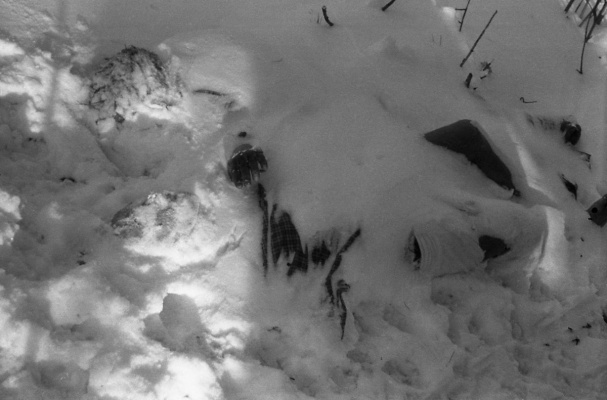
This is how the first bodies were found on February 27, 1959 under an old cedar, close to a fire pit. The photo is made before the snow is removed. We can see the checkered shirt of Krivonischenko (facing up on the photo to the right). This photo started a legend that the two bodies were covered with a blanket, burial style.

Same bodies after the the snow has been cleaned, Doroshenko facing down, Krivonischenko facing up. Doroshenko had burns on his foot and the right temple. Krivonischenko had burns on his left leg and left foot. On their hands were observed numerous minor injuries, bruises and abrasions. Doroschenko was first thought to be Zolototaryov.
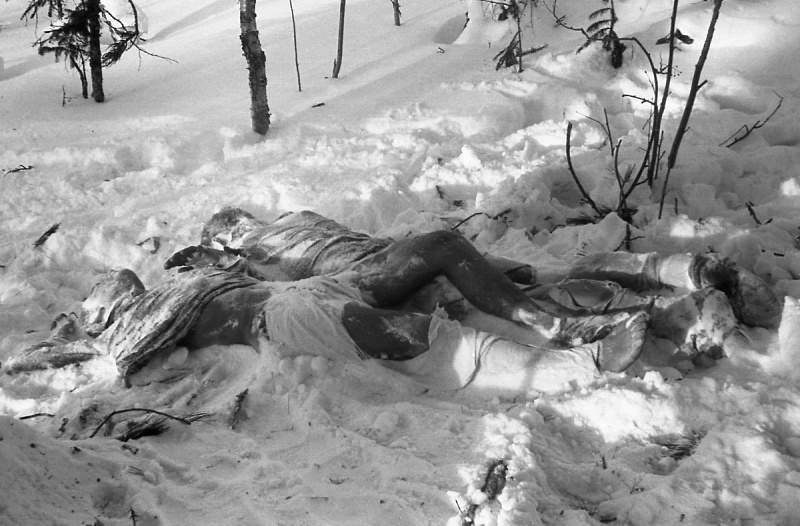
The position Doroshenko's body was found does not match the livor mortis on his back. The bodies were laid down next to each other points to the post-mortem manipulations. The scene looks orderly, no obscene games with the corpses that killers very often leave behind. This suggests that whoever was last in contact with the bodies felt compassion, pity and respect towards the victims. They were not the murderers, but their friends in distress that tried to make their deathbeds somehow less horrible.
Yuri Doroshenko (21)
Post mortem photos {proceed with caution} graphic crime scene photos 18+
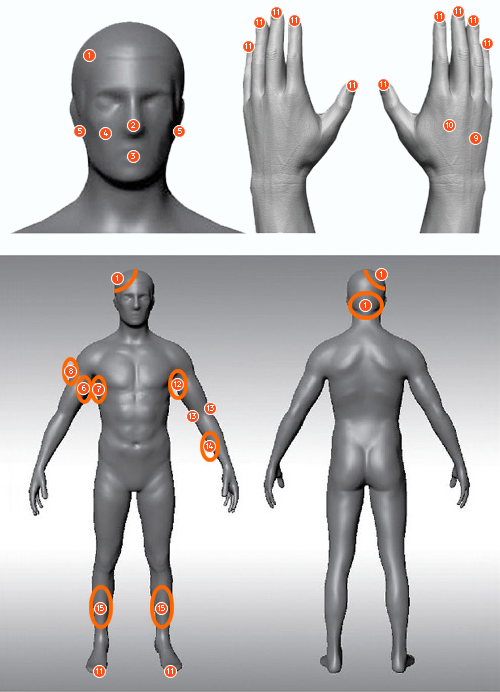
Yuri Doroshenko was 180 cm tall, most sturdy and tallest member of the group. The complexion of the deceased has been described as "brown-purple". He was wearing sleeveless cotton undershirt, short sleeve checkered shirt with two empty breast pockets with all six buttons fastened, shorts and swimming trunks, blue cotton underpants fastened with two buttons - badly ripped on the front of the right side with one large hole 23 cm in length and inside the thigh of the left side 13 cm in length. He was wearing different set of wool socks on both feet, socks on left foot were burned. No shoes. Livor mortis spots were located at the back of the neck, torso and extremities, which was not consistent with the position of the body in which it was found. This means the body was moved some time after the blood stopped circulating.
- in the hair of the deceased expert found particles of moss and pine needles; hair is burned on the right side of the head
- ear, nose and lips are covered with blood
- swollen upper lip with dark red hemorrhage
- right cheek soft tissue covered with gray foam; gray liquid coming from his open mouth. Most apparent cause is pulmonary edema.
- ear auricles in bluish-red color; in the right ear lobe and tragus dense patches of brown-red color
- inner surface of the right shoulder has two abrasions 2x1.5 cm with no bleeding in the tissues, two cuts on the skin
- right armpit has a bruise 2x1.5 cm
- brown-red bruises with size 4x1 cm, 2.5x1.5 cm, 5x5 cm in the upper third of right forearm
- swelling and small abrasions in the rear of the right hand soft tissue
- bruise with bleeding into the underlying soft tissue on the back of the right hand corresponding to the second metacarpal bone
- the soft tissues of both hands and fingers tips are especially dark purple; all fingers and toes are severelly frostbitten. If Yuri Doroshenko would have survived, he would have required an amputation of all his toes and fingers.
- on the inner surface of the left shoulder in the lower third abrasion brown-redcolor
- on the inner surfaces of the left elbow minor abrasions brownish-red color
- on the inner surface of the left forearm there is a surface skin wound covered with dried blood
- similar bruises in pale red color on the shins of both legs
Autopsy report from the case files
Amount of urine was 150 cm3. This volume is smaller than what it would be expected in case of death by hypothermia. The body was still making efforts to fight the freezing at the time of death. The hypothermic death cases have significantly more urine in the bladder (www.ncbi.nlm.nih.gov). The foamy grey fluid that was found on the right cheek of the deceased started the speculations that before death someone or something was pressing on his chest cavity. This forceful method was common for interrogation by the NKVD (Stalin's Secret Police) and Special Forces. The cause could also be a nasty fall from a tree. This aspect was ignored in the final papers, that read cause of death: hypothermia.
Experts described the injuries - bruises and abrasions, as non-life threatening and explained them with Doroshenko hitting himself in rocks and ice, and other surrounding objects, in the state of agony. Death, according to the file, occurred 6-8 hours after the last meal.
Yuri Krivonischenko (23)
Post mortem photos {proceed with caution} graphic crime scene photos 18+
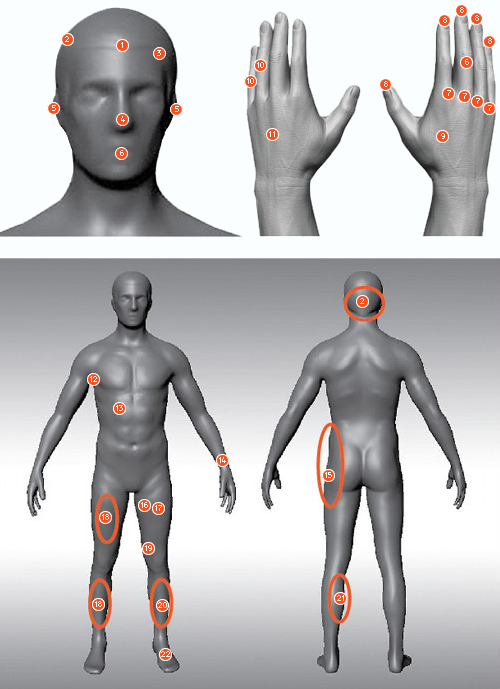
His body was discovered underneath the cedar tree. He was dressed in a undershirt, long sleeved checkered shirt, swimming pants, long underpants and torn sock on his left foot. No footwear.
- bruises on the forehead 0.3x1.8 cm
- diffuse bleeding in the right temporal and occipital region due to damage to temporalis muscle
- bruise around left temporal bone
- tip of the nose is missing, no traces of blood meaning it was bitten most probably by animals post mortem, the deceased was found face up
- frostbitten ears
- portion of the epidermis from the right hand is found in the mouth of the deceased
- back of the right hand is swollen, fingers are brownish-purple
- tips of the fingers on right hand are dark brown color, minor skin abrasions on the soft tissue
- palm of the right hand bluish-red color, dark brown skin wound with jagged edges at the base of the thumb
- in the middle phalanx of the fingers 4-5 cutaneous wound with hard edges and charred surface
- detachment of the 2 cm epidermis on the back of his left hand
- abrasion in pale red color on the right side of the chest 7x2 cm and 2x1.2 cm
- pale red abrasions along middle clavicular line at the edge of the rib of the right hypochondrium
- dark red abrasions on left wrist, back of the left hand is swollen
- pink and brown-red bruise on his left buttock 10x3 cm
- three linear skin lesions with straight edges, sharp corners and depth up to 0.3 cm on the inner side of the upper third of the left thigh
- three cutaneous wounds with sharp corners on the inner side of the upper third of the left hip
- dark brown abrasion on the front of the right femur and tibia
- dark brown-red abrasions on the front-inner left thigh
- edema on the left leg and foot, burn in the area the size of 31x10 cm on the entire outer surface of the leg
- dark brown abrasions on the right shin
- patches in area 10x4 cm of brown-red epidermis peeling from the back of the left foot, second toe charred to dark brown color and the tissue is dense to the touch
Autopsy report from the case files
The amount of urine in the bladder was 500 cm3. Cause of death: hypothermia. The presence of skin between his teeth that was torn from his hand might suggest that Krivonischenko tried to stay on the cedar tree as long as he could and tried to awaken his irresponsive hands by biting himself, or he was trying to stifle a cry.
The first two bodies of (Doroshenko and Krivonischenko) that were found from the Dyatlov Pass incident showed an expected pattern of death. They froze to death. Their clothes were removed by their friends. It might sound bad, but this is the reality of Siberia. If you can't keep yourself warm, you will die quickly. One of the most common myths that surround these deaths is a theory of so-called "paradoxical undressing". This theory ignores the fact that the bodies were undressed after they died and it was done by other members with a help of a knife in some cases. Different articles of clothing were simply cut from the dead bodies or taken off and used by other members of the group. The sliers clearly showed logical will to live. There was no state of panic and there were no illogical actions. Bodies were carefully and respectfully laid side by side and their possessions were divided among the survivors.
Igor Dyatlov (23)
Post mortem photos {proceed with caution} graphic crime scene photos 18+
Igor Dyatlov was found same day (27 Feb 1959) 300 m from the cedar, face up, head towards the tent. Above the snow were visible only his hands clenched into fists folded in front of his chest. The unbuttoned jacket is unusual for somebody that is freezing to death.

Height 175 cm, the complexion of the deceased has been described as "bluish-red". He had unbuttoned fur sleeveless vest - outer side blue cotton, inner side dark grey fur (it belonged to Yudin, case files say he left the vest to Kolevatov, but Yudin himself said in 2008 he gave it to Doroshenko, read more), a blue sweater, long sleeve red cotton shirt, in the breats pocket 4 pills Streptocide (anti-inflammatory agent used for wound infection) still in the blister, blue sleeveless cotton singlet, ski pants over his pants. No shoes. He had one cotton sock on his left foot, and one woolen sock on his right foot. It is hard to explain this uneven distribution. It could be that he had two socks on one foot and later took it off to protect the other bare foot. It might have been someone's sock who simply gave it away to protect a friend from a certain death. The watch "Zvezda" (Star) on the his wrist had stopped at 5:31
- minor abrasions on the forehead
- minor abrasions on the upper eyelids
- brown-red abrasions above the left eyebrow
- minor abrasions on the left cheek
- brown-red abrasions on both cheeks
- dried blood on lips
- lower jaw had a missing incisor, the mucosa was intact that suggests the tooth was lost long before the final trip
- bruised knees without bleeding into the underlying tissues
- both ankles had brownish red abrasions, size 1x0.5 cm and 3x2.5 cm with hemorrhage into the underlying tissue
- single incision 4x2 cm in the lower third of the right tibia
- many small scratches of dark red color on the lower third of the right forearm and palm surface
- purple-gray discoloration on back side of the right hand
- metacarpophalangeal joints on the right hand had brown red bruises. This is common injury in hand to hand fights. To get a better idea of the injuries just make a fist. This is the part of the hand which you use to hit someone.
- left hand is brown-purple color with brownish-red bruises
- superficial wounds on the 2nd and 5th finger on the left hand
- skin wound in the palmar surface of the 2nd 5th finger of left hand
Autopsy report from the case files
There were no internal injuries. Amount of urine in the bladder about 1000 cm3. Cause of death: hypothermia. Later Yury Yudin will testify that the long sleeved shirt found on the body of Igor Dyatlov was his. But he gave it to Doroshenko then he was departing. It would be logical to assume that Dyatlov got it from a frozen body of the Doroshenko after he had died.
Zinaida Kolmogorova (22)
Post mortem photos {proceed with caution} graphic crime scene photos 18+
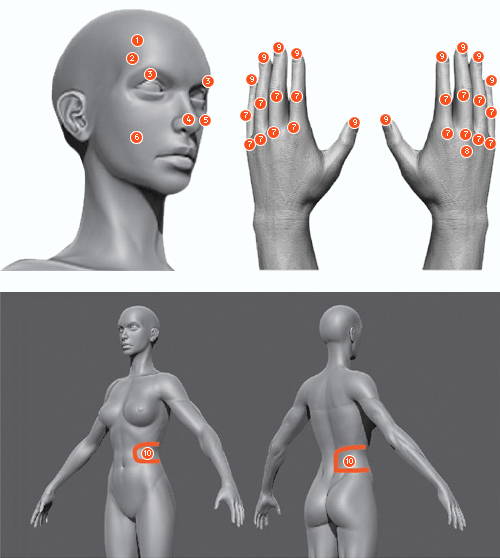

Zinaida was found 630 m from the cedar, face down, head towards the tent. The skin of the face and hands is purple-red in color. She was better dressed than the bodies under the cedar. She had two hats, long sleeve undershirt, sweater, checkered shirt and another sweater with torn cuff of the right sleeve. It was unclear whether she cut them it or it was torn by another person. Sweaters were inside out which is not unusual for mountaineers when they try to dry clothes by wearing them. Waist down Zinaida was wearing cotton sport pants, trousers, ski pants with three small holes at the bottom of the right trouser-leg, and three pairs of socks. Two pairs were thin, then the third pair was woolen with insoles inside. No footwear. In her pockets were found 5 rubles and a military style protective mask on the left side of her chest between the top sweater and the checkered shirt underneath.
- dark red abrasion on the right frontal eminence
- pale gray area 3x2 cm above the right eyebrow
- dark red abrasion on the upper eyelids
- brown red graze on the bridge and tip of the nose
- numerous abrasions on the left cheekbone
- bruised skin on the right side of the face
- brown-red abrasion on the back of both hands in the area of metacarpal phalangeal and inter-phalangeal joints
- wound with jagged edges and missing skin on the back of the right hand at the base of the third finger
- frostbites on the phalanges of fingers
- a long bright red bruise 29x6 cm in the lumbar region on the right side of the torso. The bruise looks like left from a baton
Autopsy report from the case files
Amount of urine in bladder is 300 cm3. Cause of death: hypothermia due to violent accident. Medical examination shows that Zinaida was not sexually active at the time of her death. This fact is only relative to (1) asses the nature of the relationship between Zinaida Kolmogorova and Igor Dyatlov, and (2) if escaped prisoners were to blame for the crime it's doubtful that they would have left the girls alone.
Rustem Slobodin (23)
Post mortem photos {proceed with caution} graphic crime scene photos 18+
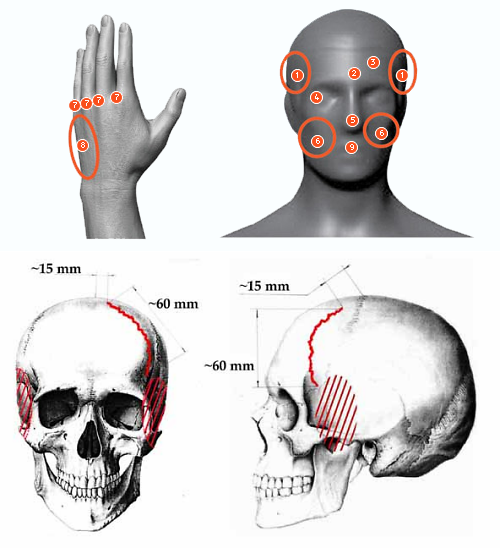
Fracture of the frontal bone and hemorrhages (shaded areas) in the temporalis muscles that were found on the skull of Rustem Slobodin
Rustem's body was found 480 m from the cedar on March 5, the day after the autopsy of the first four bodies, covered with 50 cm of snow, face down, head towards the tent. He was better dressed that the previously found hikers. He wore a long sleeve undershirt, shirt, sweater, two pairs of pants, four pairs of socks, and one felt boot (valenka) on his right foot. His watch stopped at 8:45 am. On the chest under the sweater were two shoe insoles, in the shirt pocket - 310 rubles and his passport. In other pockets were found small folding pocket knife (penknife), pencil, pen, comb in a plastic sleeve, box of matches with 48 match sticks, and one cotton sock. His autopsy was performed on March 8 by Vozrozhdenniy alone.
- hemorrhages in the temporalis muscles
- minor brownish red abrasions on the forehead
- two scratches are 1.5 cm long at the distance of 0.3 cm between them
- brownish red bruise on the upper eyelid of the right eye with hemorrhage into the underlying tissues
- traces of blood discharge from the nose
- swelling and a lot of small abrasions on both sides of the face
- bruises in the metacarpophalangeal joints on both hands (bruised knuckles). Similar bruises are common in hand to hand fight
- brown cherry bruises on the medial aspect of the left arm and left palm
- swollen lips
- bruises on the left tibia in dimensions at 2.5x1.5 cm (not shown on diagram)
- epidermis is torn from the right forearm (not shown on diagram)
- fracture of the frontal bone 6x0.1 cm located 1.5 cm from the sagittal suture (showing on separate skull trauma diagram without numbers)
Autopsy report from the case files
Boris Alekseevich Vozrozhdenniy suggested that the fracture in his skull could be done with some blunt object. Medical autopsy further states that Slobodin probably suffered loss of coordination due to initial shock right after the blow that could speed up his death from hypothermia. However the conclusion is predictably careful. Death of Rustem Slobodin is judged as a result from hypothermia. All bruises and scratches were blamed on last minute agony. Although it is still somewhat unclear how did he manage to harm his exterior hands and legs. When the person falls even in an irrational state it is usually the palms that suffer the most as well as medial aspects of the legs. Injury to the head are less common, especially bilateral ones. It is also unusual to harm the face and sides of the skull while the back of the head has no damage. In case of Slobodin's body we see the opposite. His injury pattern is a reverse of what we would usually see in injuries suffered by a freezing man in the last minutes of his life. It looks as if Rustem fell repeatedly on his face as he was walking down the mountain. And every time he fell he managed to hit the sides of the his head. This is unusual for a man who was probably in a better physical shape than anyone else in the group. Even a long ski trip could hardly be responsible for this alleged "clumsiness". Rustem's body was with icy bed under from the hardening of the thawing snow. This means that the body fell when relatively still warm and there was a noticeable heat exchange into the environment. This observation and conclusion was mentioned in Akselrod's testimony, but he hasn't seen the rest of the bodies when they were found, so if Akselrod was the only one registering the fact, then the rest just might as well have icy beds that nobody testified about. At least we have one dying spot that looks like hasn't been doctored.
On Doroshenko, Kolmogorova and Slobodin the livor mortis spots were on the top surface of the body. This allows speculations that the bodies were moved (turned over) after their death. This finding is controversial.
The Den
Searching efforts continue but two months went by without a trace of the remaining 4 hikers.
When in May the snow start melting a Mansi native Kurikov with his dog noticed some cut branches that were forming sort of trail which they followed and 50 m from the cedar they found black cotton sweat pants, the right leg cut off with a knife. Cedar branches, a young fir tree was missing its top, another piece of clothing was found - the left half of the women's light-brown wool sweater, right half and sleeves cut off. Sweater was presumed to belong to Lyudmila Dubinina. The area was previously searched with avalanche probes but the snow then was deeper than expected. The bodies were found on May 5 and examined on May 9, 1959. See more detailed maps
Dyatlov Pass Den is one of the key issues in the whole Dyatlov Pass Incident. On one hand it clearly shows that member of the party were sane enough to do anything in their power to survive. On the other hand it is still unclear on why their attempts didn't work. Another question is where did the knife that cut the branches go.
The den was made by surviving four members of the Dyatlov group 70-75 meters from the cedar in a ravine that was hidden from cold winds. It was probably an idea of Zolotaryov. It was a common way to survive winters at the front and given the circumstances it offered the best chance for survival for those who remained behind waiting in hope that their three friends will make it to the top of the mountain. It further undermines the theory of paradox undressing. The group clearly realized their threats and did everything they could to preserve themselves. Cedar branches were brought here and laid out to minimize contact of human bodies and cold snow underneath. Furthermore Ludmila Dubinina had sweater and pants of Krivonischenko. Both as it turned out had radiation present on them. However the strangeness of the case was not resolved. In fact it became more weird. All, but three members had significant damage to their bones. They were crushed with immense force. Doctors compared the extend of the damage to being hit by a car. A second thing that is striking about the den is that bodies were actually found few feet from their improvised shelter in the deep part of the ravine on the area of only 4 square meters. Some of the clothes that were taken from bodies left underneath the cedar tree were placed on the cedar branches, but apparently they were not used. Read more about The Den »
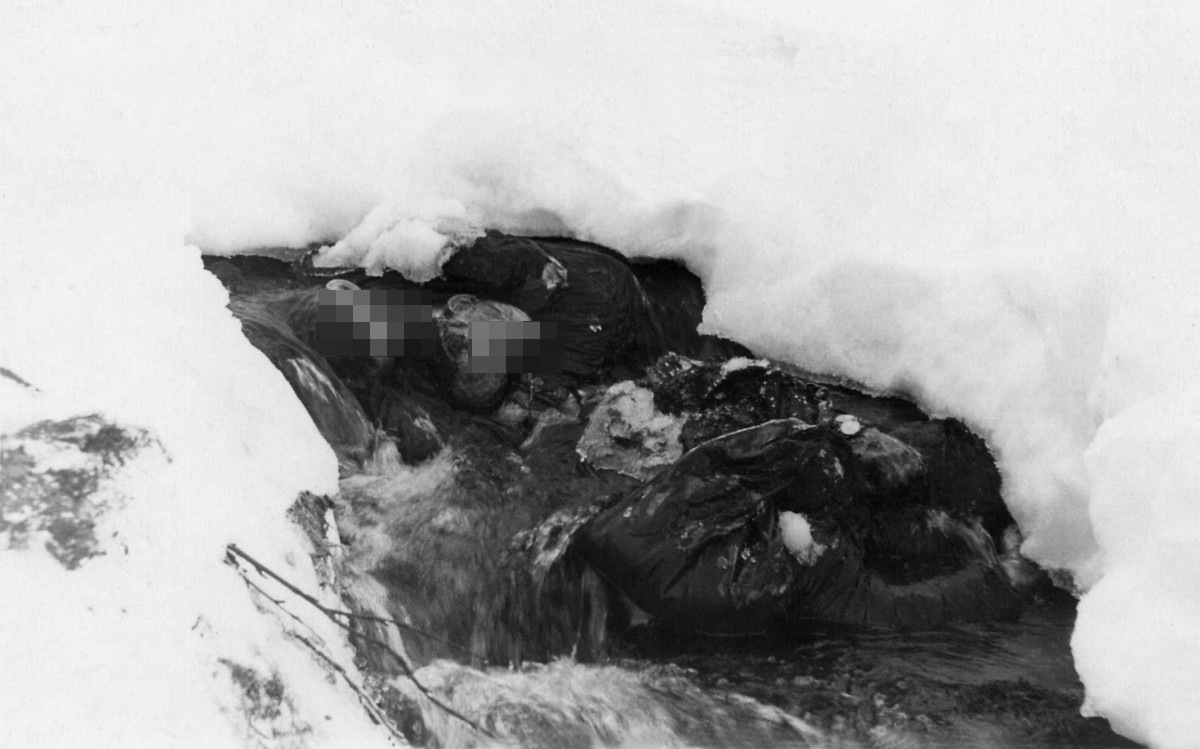
The bodies of Kolevatov and Zolotaryov were embraced breast-to-back, as if Kolevatov was protecting or trying to warm up Zolotaryov. The body of Thibeaux-Brignolle was positioned 30 cm downstream.
Lyudmila Dubinina (20)
Post mortem photos {proceed with caution} graphic crime scene photos 18+
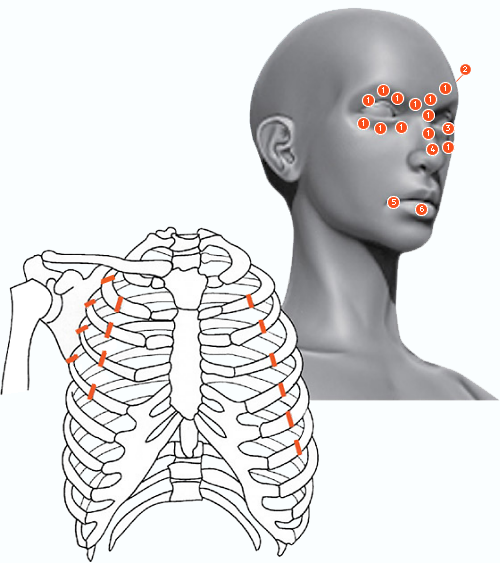
Lyudmila wore a short sleeve shirt, long sleeve shirt, and two sweaters. The brown sweater belonged to Krivonischenko - one of the two found beneath the cedar, and lately tested radioactive. The body was dressed with underwear, long socks, two pairs of pants. External pair was badly damaged by fire and subsequently ripped. She also wore a small hat and two pairs of warm sock. A third sock was not paired. Lyudmila apparently in the last attempt to preserve her feet took off her sweater and cut it in two pieces. One half she rapped around her left foot. Another half she left or dropped unintentionally on the snow.
- soft tissues are missing around eyes, eyebrows, nose bridge and left cheek bone is partially exposed
- damaged tissues around left temporal bone, size 4x4 cm
- eye sockets are empty, eyeballs are missing
- nose cartilages are broken and flattened
- soft tissues of the upper lip are missing, teeth and and upper jaw is exposed
- tongue is missing
- ribs 2, 3, 4, 5 are broken on the right side, two fracture lines are visible
- ribs 2, 3, 4, 5, 6, 7 are broken on the left side, two fracture lines are visible
- massive hemorrhage in the heart's right atrium
- bruise in the middle left thigh, size 10x5 cm (not shown on diagram)
Autopsy report from the case files
Dubinina was laying on a kind of a natural ledge with water rolling over it. Her mouth was open. There are claims that the tongue was ripped, or eaten, or whatnot. The medical records simply that "the tongue is missing". Vozrozhdenniy describes missing hypoglossal muscle as well as muscles of the floor of the mouth.
It looks weird especially given the fact previous bodies had more detailed autopsies. There is no credible explanation for this vague statement. It is noted that the stomach contained about 100 g of dark brown mucosal mass [ed. - often misquoted as coagulated blood]. It is used by some as an indication that the heart was beating and the blood was flowing when tongue was removed from a mouth. The cause of death is stated as hemorrhage into right atrium of the heart, multiple fractured ribs and internal bleeding.
Medical examination shows that Lyuda was not sexually active at the time of her death. This fact is only relative to the fact that whoever did the crime did not sexually assault the girls, or the men as a matter of fact.
Semyon Zolotaryov (37)
Post mortem photos {proceed with caution} graphic crime scene photos 18+
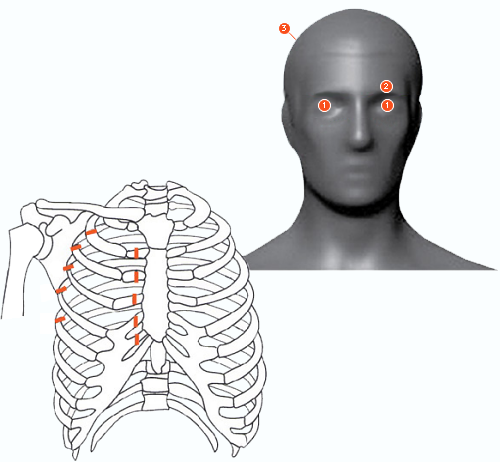
- eye balls are missing
- missing soft tissues around left eye brow, size 7x6 cm, bone is exposed
- open wound on the right side of the skull with exposed bone, 8x6 cm in size
- flail chest, broken ribs 2, 3, 4, 5, 6 on the right side, two fracture lines
Autopsy report from the case files
The body of Semyon Zolotaryov was found at the Dyatlov Pass with two hats, scarf, short, long sleeve shirt, black sweater and a coat with two upper buttons unbuttoned. It was fairly clear that the guy didn't die from the cold. On the contrary the den was pretty warm place for him. His lower part of the body was protected by underwear, two pairs of pants and a pair of skiing pants. He had a copy of newspapers, several coins, compass, and other few items. His legs were protected by a pair of socks and a pair of warm leather hand made shoes known as "burka". They probably couldn't keep him warm for a long time, but in the den it was sufficient in keeping the man alive. Additionally the body of Zolotaryov had a camera around his neck as it is clearly seen on the pictures. According to hearsay that this camera became a complete surprise to Yuri Yudin. That he assumed the group had only four cameras that were found in the tent. And all of a sudden a fifth camera turned out on the body. Unfortunately melting water damaged the film. But the question still lingers. Why did Zolotaryov left the tent with the camera and why did he take two cameras to the trip? One was used on daily basis and everyone saw it. It was left in the tent and discovered there by the search party, but another was hidden throughout the journey and was found only after Semen Zolotaryov have died. The film was damaged by water so the question remains: "What was so important that he captured on the slope of the mountain that day?" He was also found holding a pen in one hand and a small notepad in the other. Vladimir Askinadzi recalls that Colonel Ortyukov grabbed the notepad, looked at it, cursed and said: "He’s written nothing." He seems to be the only one that has seen the notepad. The whereabouts of this notepad is unknown, it was never filed in evidence or seen by anyone else. On the other hand we hear only from Askinadzi about the whole episode with the pen, notepad and Colonel Ortyukov, and that 59 years after the fact in a recent letter of Askinadzi to Ural Pathfinder magazine.
Both Zolotaryov and Dubinina have an interesting pattern of injuries. They are very similar in direction and force despite difference in shape, height and body composition of the two. This would suggest that whatever caused these injuries was not a single uniform event.
Еxcerpt from the interrogation of forensic expert of the Regional Forensic Investigation Bureau Boris Vozrozhdenniy led by Junior Counselor of Justice and Criminal Prosecutor of Sverdlovsk region, Lev Ivanov, on May 28, 1959:
How is it possible to explain the cause of the damage to Dubinina and Zolotaryov? Is it possible to combine them into one cause?
I think the character of the wounds on Dubinina and Zolotaryov – a multiple fracture of the ribs – on Dubinina were bilateral and symmetrical, and on Zolotaryov were one-sided. Both had hemorrhaging into the cardiac muscle with hemorrhaging into the pleural cavity, which is evidence of them being alive [when injured] and is the result of the action of a large force, similar to the example used for Thibeaux-Brignolle. These wounds, especially appearing in such a way without any damage to the soft tissue of the chest, are very similar to the type of trauma that results from the shock wave of a bomb.
How long could Dubinina and Zolotaryov have lived?
Dubinina died 10-20 minutes after the trauma. She could have been conscious. Sometimes it happens that a person with a wound to the heart (for example, a serious knife wound) can talk, run and ask for help. Dubinina’s situation was one of complicated traumatic shock resulting from the bilateral rib fracture, with subsequent internal hemorrhaging into the pleural cavity. Zolotaryov could have lived longer. It needs to be taken into account that they were all trained, physically fit, and strong people.
Aleksander Kolevatov (24)
Post mortem photos {proceed with caution} graphic crime scene photos 18+
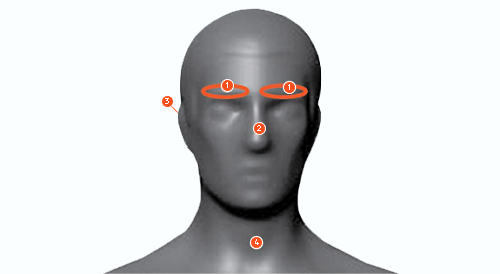
The body of Aleksander Kolevatov was well insulated, but he was missing a hat and shoes. His upper torso was protected by a sleeveless shirt, long sleeved shirt, sweater, fleece sweater and ski jacket with a zipper found unzipped. Ski jacket was damaged. A big hole on the left sleeve had burnt edges and measured 25x12x13 cm. His right sleeve was also damaged. Several tears 7-8 cm were found. The jacket was unbuttoned and unzipped. A strange finding for person who was supposedly dying from cold and hypothermia. During autopsy following objects were retrieved from his pockets: key, safety pin, some blank paper (probably to keep a record of his thoughts or events) and two packages of pills (soda and codeine).
The lower part of the body had shorts, light pants, ski pants and another pair of canvas pants. From the right pocket doctors retrieved a box of matches that was soaked wet. His feet as it was mentioned had no shoes, but they were protected by home knitted woolen socks with sights of fire damage. His right foot was also protected by a light sock underneath a woolen one. His left foot had similar three socks. Additionally a bandage was discovered on the left ankle, but it was probably put before the Dyatlov Pass Incident since the group left their first aid kit in the tent.
The waistband of his sweater and the lower parts of his trousers later tested radioactive.
- lack of soft tissues around eyes, eyebrows are missing, skull bones are exposed
- the bridge of the nose is straight; the nose cartilage is soft when palpated and has unusual mobility; the base of the nose is flattened with the nostrils compressed (this doesn't necessarily mean broken nose)
- open wound behind ear, size 3x1.5 cm
- deformed neck
- diffuse bleeding in the underlying tissues of the left knee (not shown on diagram)
- softened and whitened skin (maceration) of the fingers and feet, sign consisted with putrefaction in a wet environment
- overall skin had a gray green color with a tinge of purple
Autopsy report from the case files
This autopsy had similar strange silence about the injuries of the victim. Broken nose, open wound behind the ear and deformed neck might be the result of a fight and be cause of death. On the other hand it could have been caused by natural elements since the body was exposed to nature for three whole months. Yet the doctor ignores this matter and doesn't try to explain the reason for these strange injuries. We should probably add that snapped neck and blow behind the ear is a common sign of killing performed by special forces. However we can't be sure about this since the autopsy report didn't specify any more details about the body. We are left guessing on the nature and origin of these injuries.
Nikolay Thibeaux-Brignolle (23)
Post mortem photos {proceed with caution} graphic crime scene photos 18+

Nikolay Thibeaux-Brignolle was well protected against coldness of Siberian winter. It was suggested that he and Zolotaryov might have been outside of the tent at the time mysterious threat struck them. This explains why both hikers wore shoes and were covered by several layers of clothes. Both men were much better prepared than the rest of the group when they were forced to abandon their tent.
Nikolay wore a canvas fur hat and home knitted woolen hat. Upper body was protected from coldness by shirt, wool sweater worn inside out and a fur jacket on a sheepskin. Woolen gloves were found in the right pocket along with three coins, comb and several pieces of paper. Lower part of the body was protected by underwear, sweat pants, cotton pants and ski pants. On his feet he wore hand-knitted woolen socks and a pair of felt boots (valenki), Russian winter shoes perfect for Siberian cold.
Additionally Nikolay Thibeaux-Brignolle wore two watches on his left arm. One stopped at 8:14 and the other at 8:39. Cadaveric spots were discovered on the back of the upper body, neck and upper extremities. Face hair length up to 1cm.
- multiple fractures to the temporal bone, with extensions to the frontal and sphenoid bones, the close up of the fractures to the skull is shown on the picture
- bruise on the upper lip on the left side
- hemorrhage on the lower forearm, size 10x12 cm
Autopsy report from the case files
Vozrozhdenniy, who undertook the autopsy, excluded accidental fall on the rock as a possible cause for such a massive and unusual fracture.
From what kind of force could Thibeaux-Brignolle have received such injury?
In the conclusion, it’s shown the damage to Thibeaux-Brignolle’s head could have been the result of the throwing, fall or jettisoning of the body. I don’t believe these injuries could have been the result of Thibeaux-Brignolle simply falling from the level of his own height, i.e. falling and hitting his head. The extensive, depressed, multi-splintered (broken fornix and base of the skull) fracture could be the result of an impact of an automobile moving at high speed. This kind of trauma could have occurred if Thibeaux-Brignolle had been thrown and fallen and hit his head against rocks, ice, etc., by a gust of strong wind.
Is it possible that Thibeaux-Brignolle was hit by a rock that was in someone’s hand?
In this case, there would have been damage to the soft tissue, and this was not evident.
How long could Thibeaux-Brignolle have lived after the trauma. Could he have moved on his own, talked, etc.?
After this trauma, Thibeaux-Brignolle would have had a severe concussion; that is, he would have been in an unconscious state. Moving him would have been difficult and, close to the end, movement would not have been possible. I believe he would not have been able to move even if he had been helped. He could only have been carried or dragged. He could have shown signs of life for 2-3 hours.

